A 3D Model of the Thermoelectric Microwave Power Sensor by MEMS Technology
Abstract
:1. Introduction
2. Modeling
3. Simulation
4. Experiment Evaluation
- (a)
- the GaAs substrate is prepared;
- (b)
- the n+ GaAs thermopile is formed with a doping concentration of 1 × 1018 cm−3;
- (c)
- a TaN layer is sputtered and patterned to form the load resistors and the square resistance is about 25 Ω;
- (d)
- a 0.45-μm-thick Au layer is evaporated and patterned to form the CPW lines and contacting pads preliminarily;
- (e)
- a 500/1500/300 A Ti/Au/Ti seed layer is evaporated and patterned, and, after removing the top Ti layer, a 2-μm-thick Au layer is electroplated to form the CPW transmission lines and the contacting pads;
- (f)
- the GaAs substrate is thinned to 100 μm;
- (g)
- in order to reduce thermal losses, the substrate underneath the thermopiles and the load resistors is etched to about 20 µm by MEMS technology.
5. Conclusions
Acknowledgments
Author Contributions
Conflicts of Interest
References
- Dehe, A.; Klingbeil, H.; Krozer, V.; Fricke, K.; Beilenhoff, K.; Hartnagel, H.L. GaAs monolithic integrated microwave power sensor in coplanar waveguide technology. In Proceedings of the IEEE MTT-S International Microwave Symposium Digest, San Francisco, CA, USA, 17–21 June 1996; pp. 161–164.
- Dehe, A.; Fricke-Neuderth, K.; Krozer, V. Broadband thermoelectric microwave power sensors using GaAs foundry process. In Proceedings of the IEEE MTT-S International Microwave Symposium Digest, Seattle, WA, USA, 2–7 June 2002; pp. 1829–1832.
- Dehe, A.; Krozer, V.; Fricke, K.; Klingbeil, H.; Beilenhoff, K.; Hartnagel, H.L. Integrated microwave power sensor. Electron. Lett. 1995, 31, 2187–2188. [Google Scholar] [CrossRef]
- Kozlov, A.G. Optimization of thin-film thermoelectric radiation sensor with comb thermoelectric transducer. Sens. Actuators A Phys. 1999, 75, 139–150. [Google Scholar] [CrossRef]
- Kozlov, A.G. Optimization of thin-film thermoelectric radiation sensor with separate disposition of absorbing layer and comb thermoelectric transducer. Sens. Actuators A Phys. 2000, 84, 259–269. [Google Scholar] [CrossRef]
- Wang, D.; Liao, X.P.; Liu, T. A thermoelectric power sensor and its package based on MEMS technology. J. Microelectromech. Syst. 2012, 21, 121–131. [Google Scholar] [CrossRef]
- Wang, D.; Liao, X.P.; Liu, T. Optimization of indirectly-heated type microwave power sensors based on GaAs micromachining. IEEE Sens. J. 2012, 12, 1349–1355. [Google Scholar] [CrossRef]
- Yi, Z.X.; Liao, X.P.; Wu, H. Modeling of the terminating-type power sensors fabricated by GaAs MMIC process. J. Micromech. Microeng. 2013, 23, 085003. [Google Scholar] [CrossRef]
- Yi, Z.X.; Liao, X.P.; Wu, H. 2-D model of the indirectly-heated type microwave power sensor based on GaAs MMIC process. In Proceedings of the IEEE Sensors, Baltimore, MD, USA, 3–6 November 2013; pp. 1102–1105.
- Zhang, Z.Q.; Liao, X.P. GaAs MMIC fabrication for the RF MEMS power sensor with both detection and non-detection states. Sens. Actuators A Phys. 2012, 188, 29–35. [Google Scholar] [CrossRef]
- Chramiec, J.; Adamski, M.E.; Kitlinski, M. Evaluation of chip resistor CAD models used in microwave circuit design programs. In Proceedings of the Signals Electronics Systems, Gliwice, Poland, 7–10 September 2000; pp. 369–372.
- Zhang, Z.Q.; Liao, X.P. A three-channel thermoelectric RF MEMS power sensor for GaAs MMIC applications. Sens. Actuators A Phys. 2012, 182, 68–71. [Google Scholar] [CrossRef]
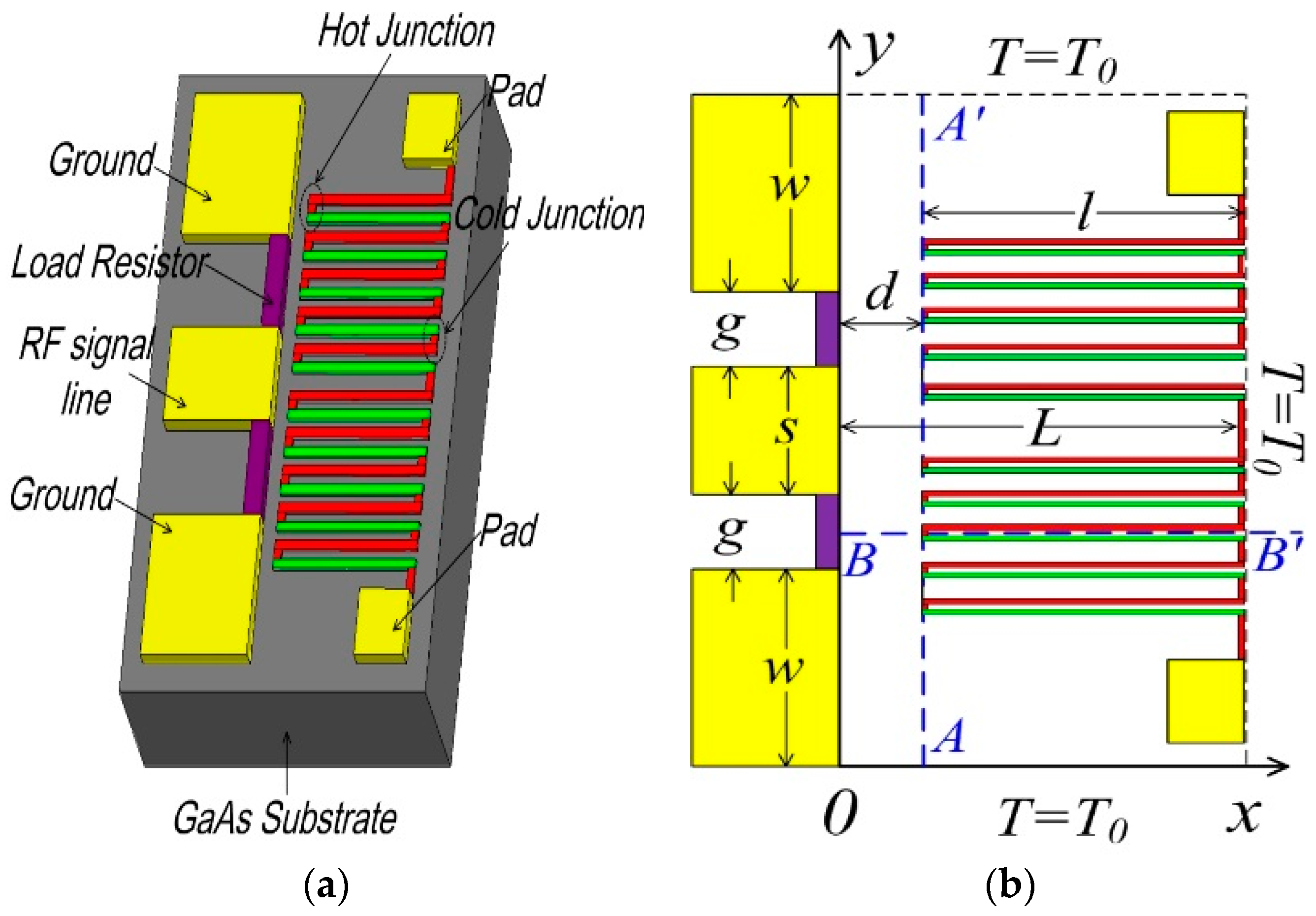
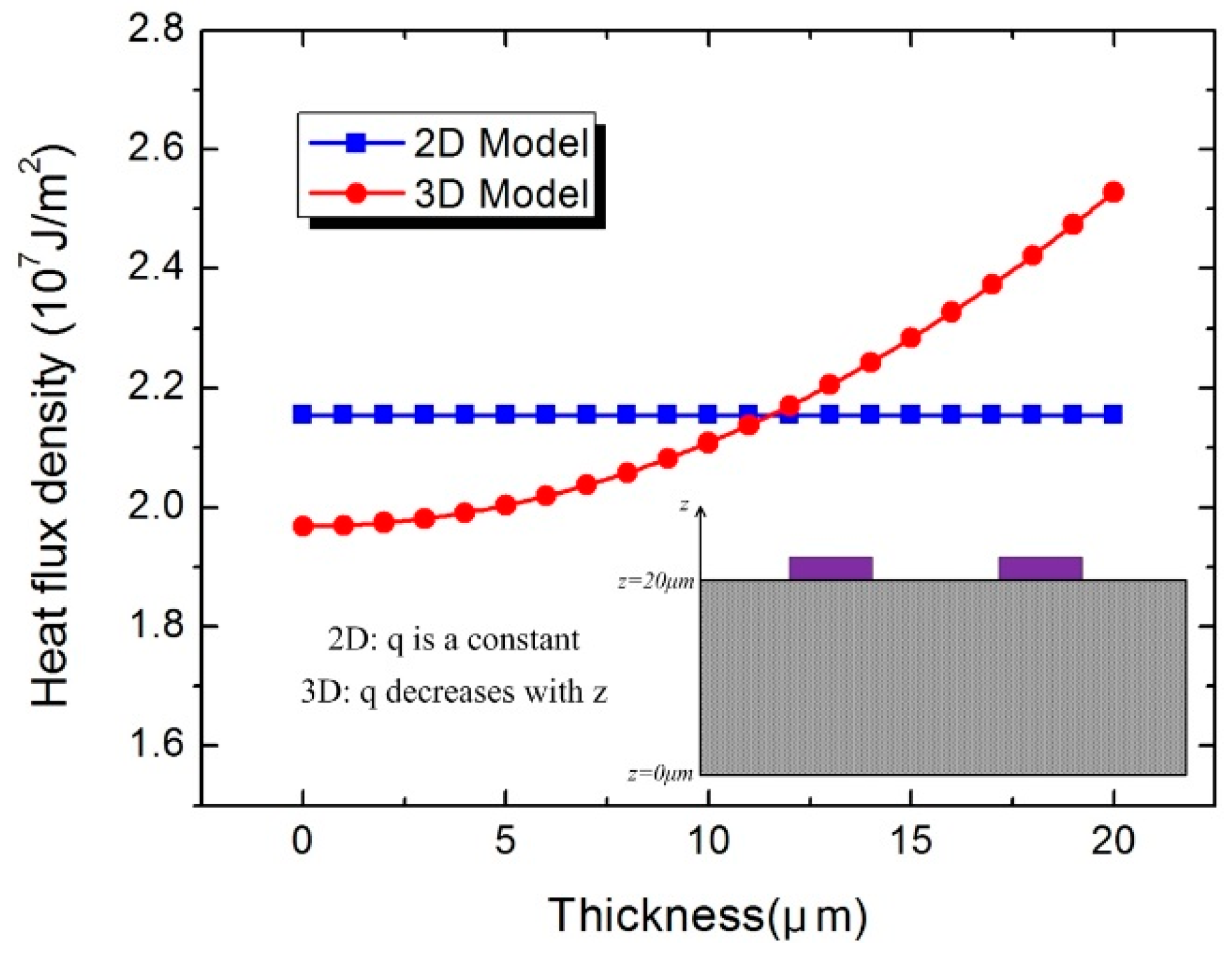
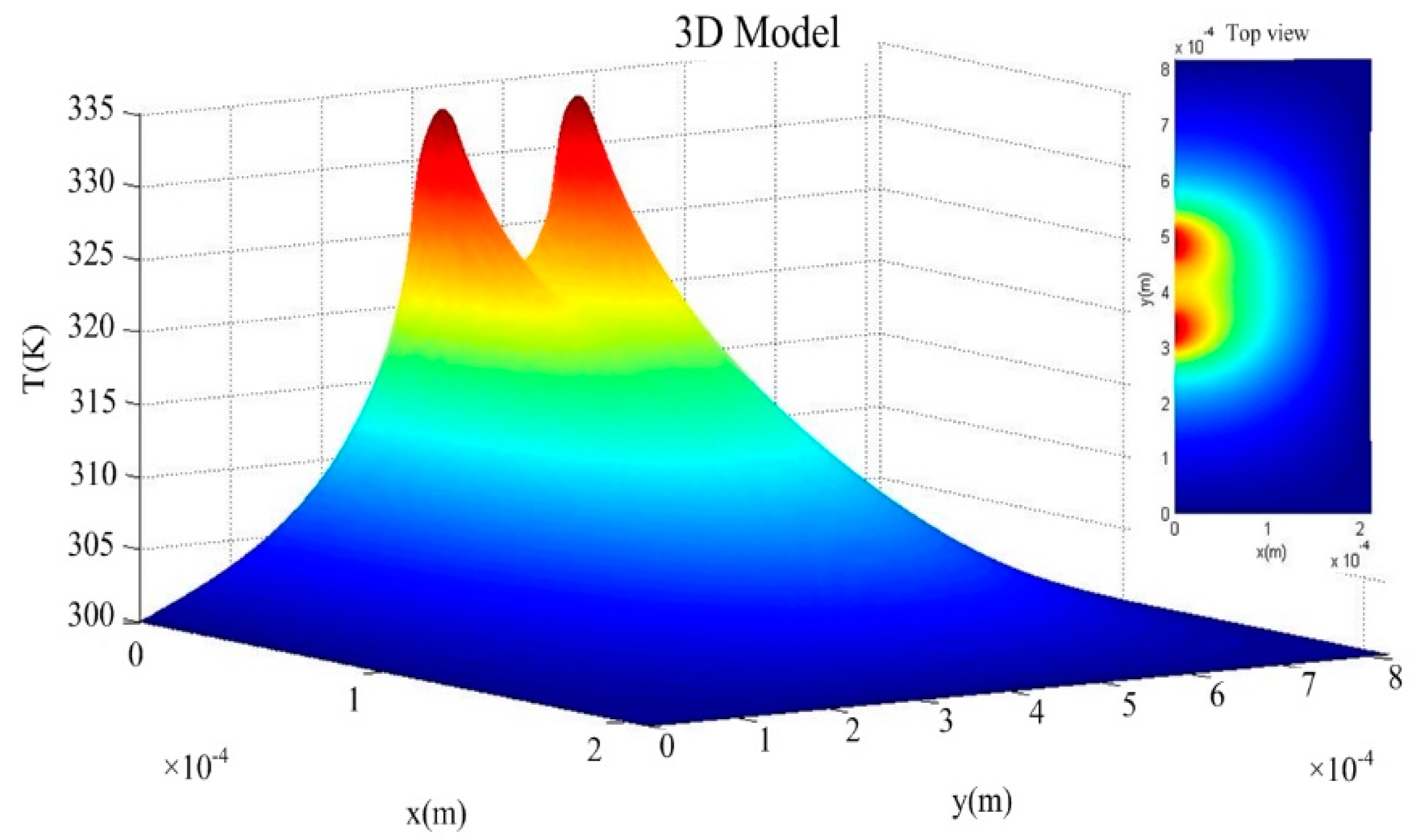

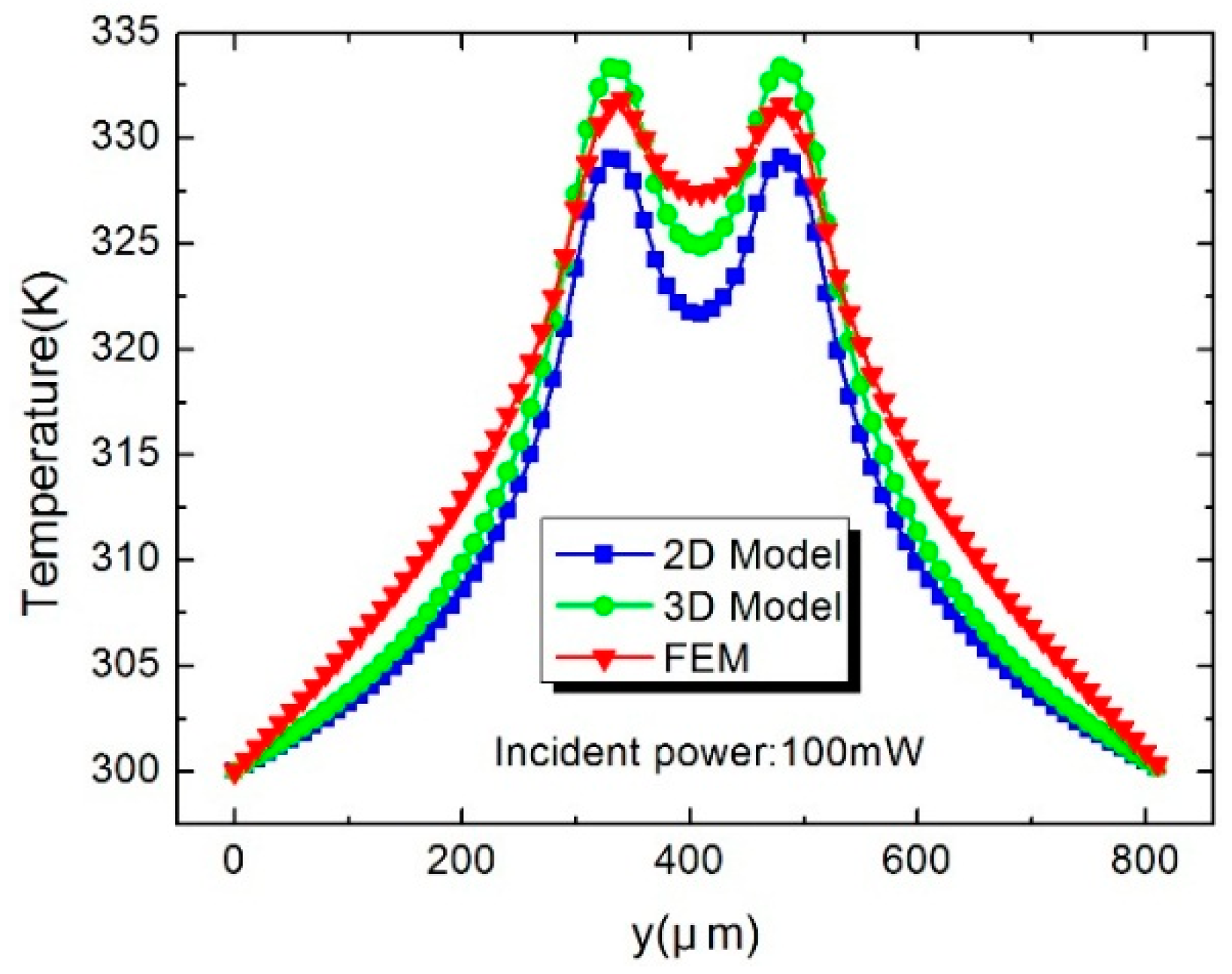

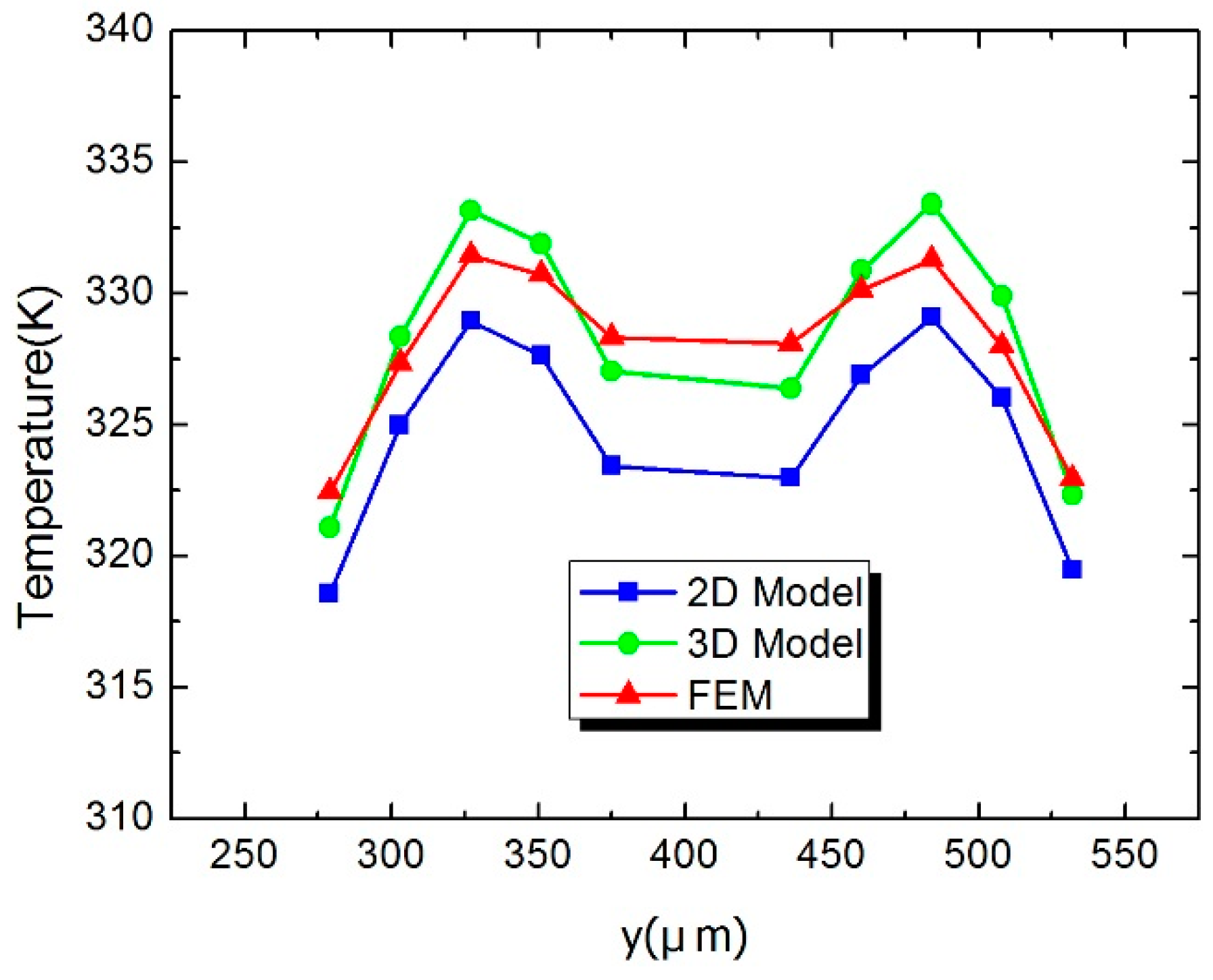
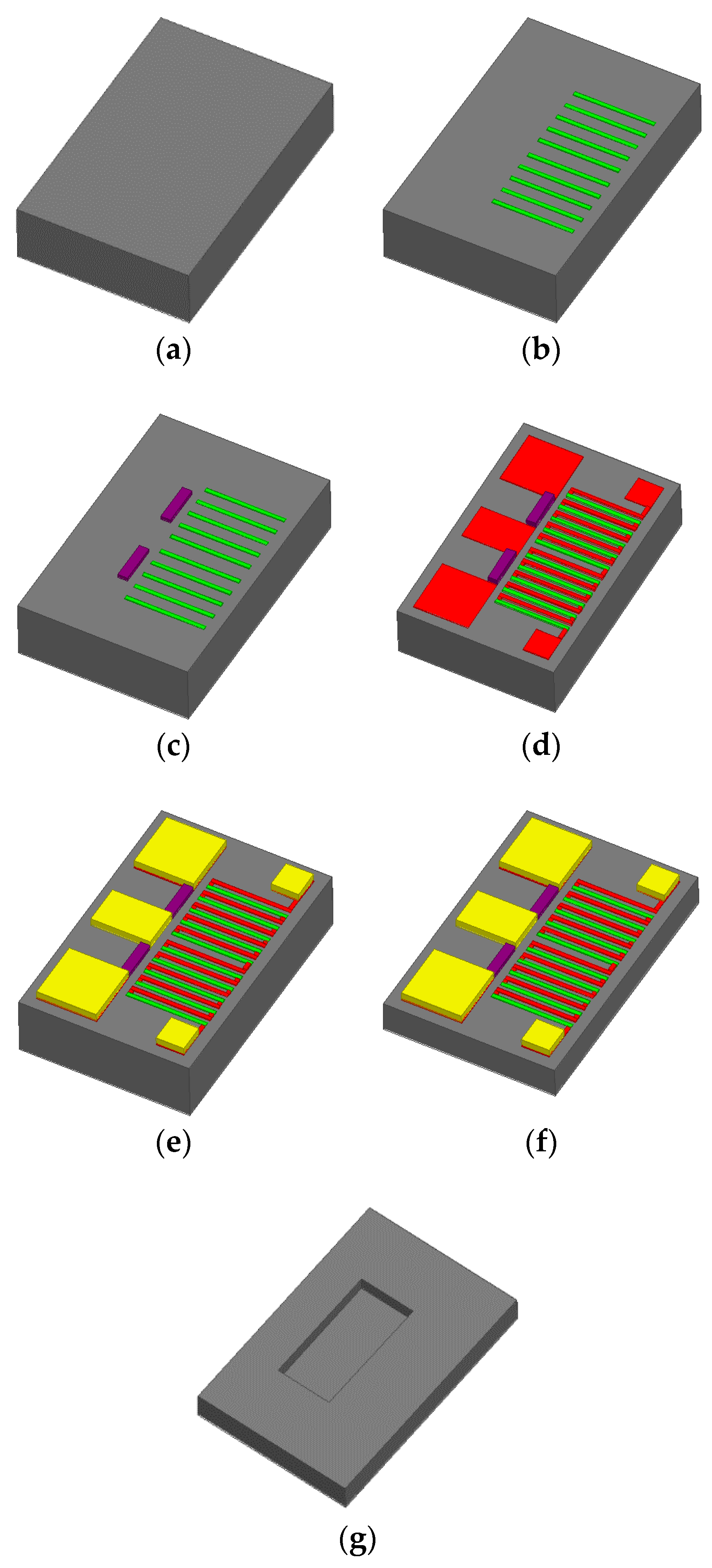
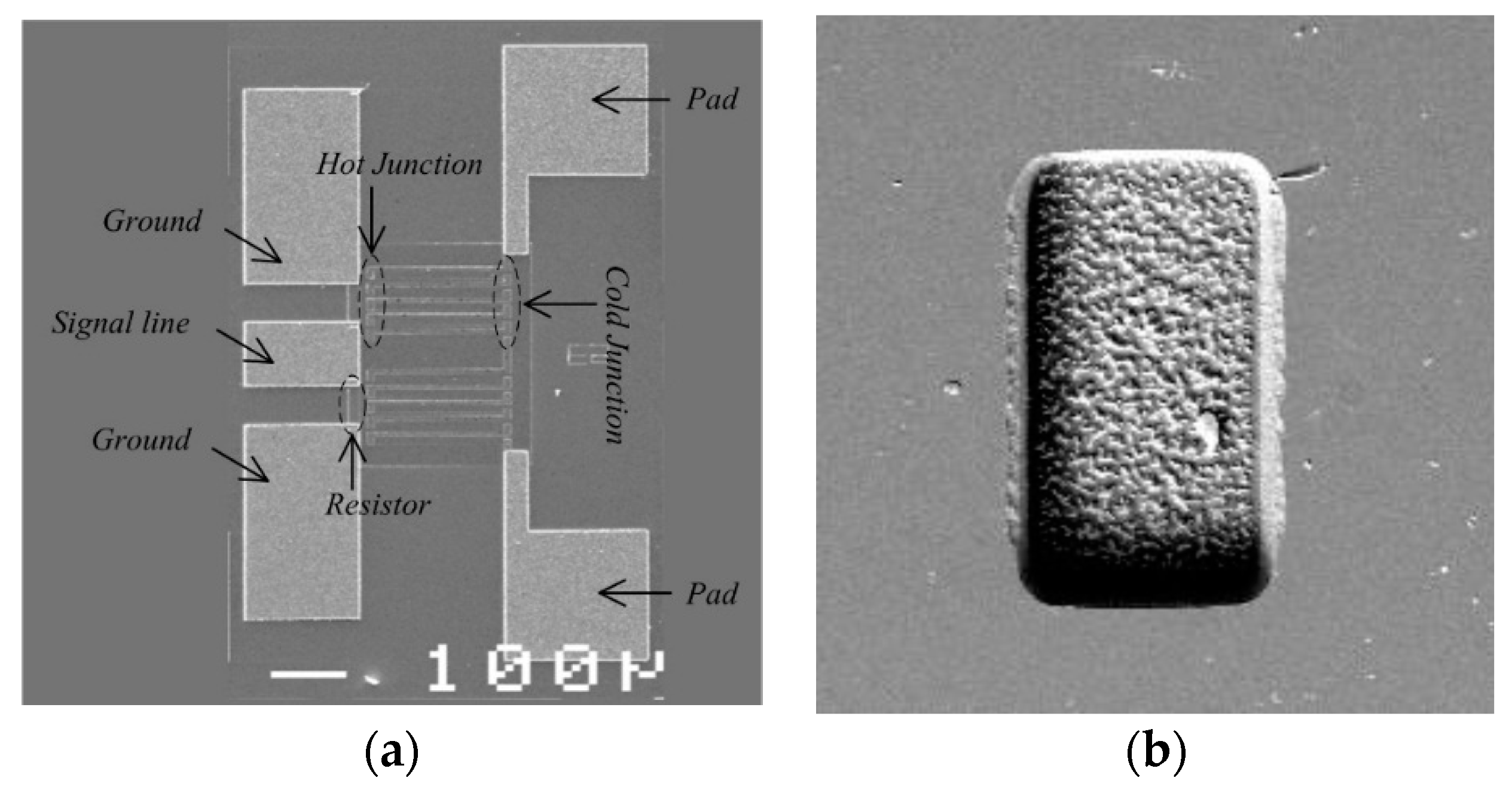
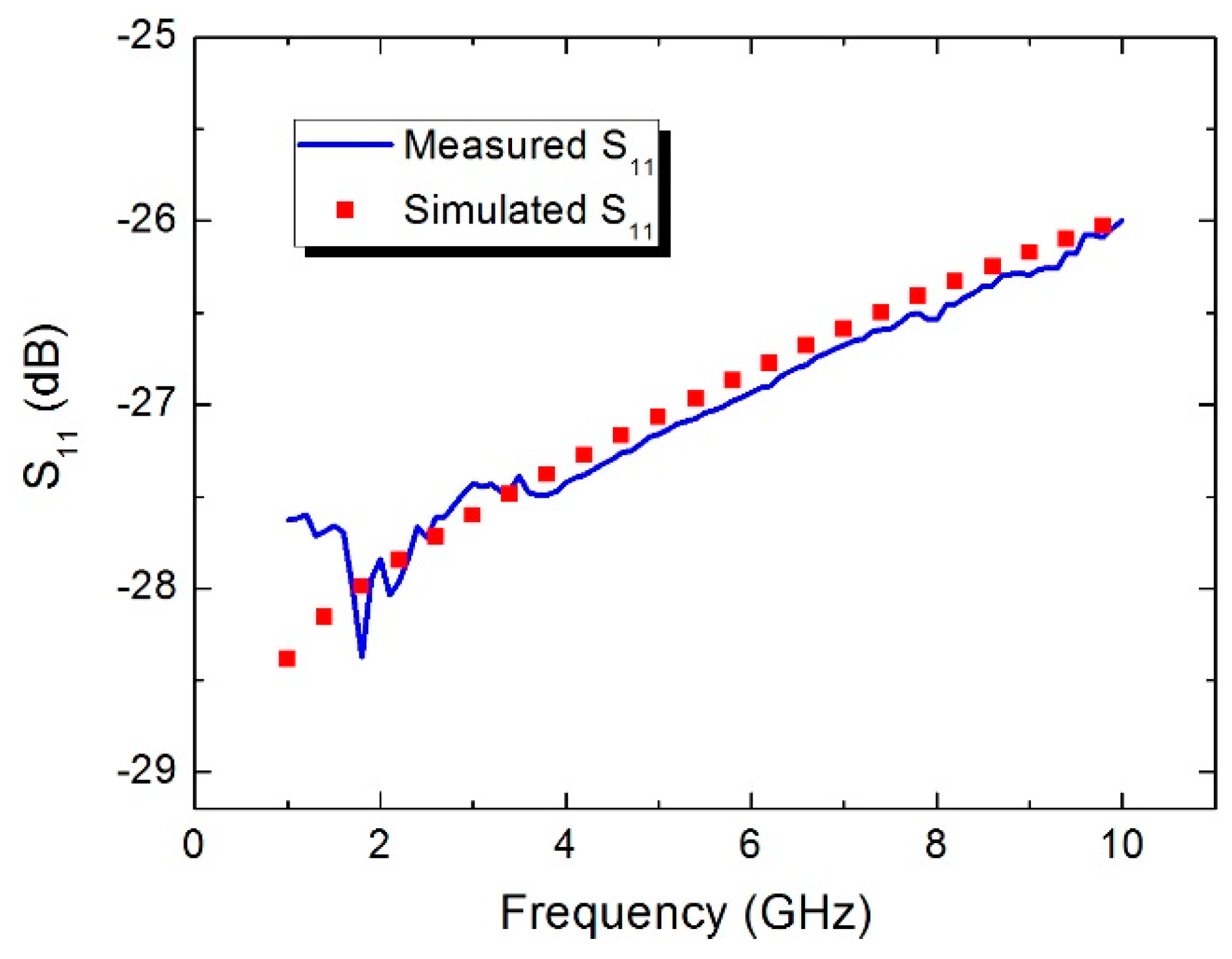
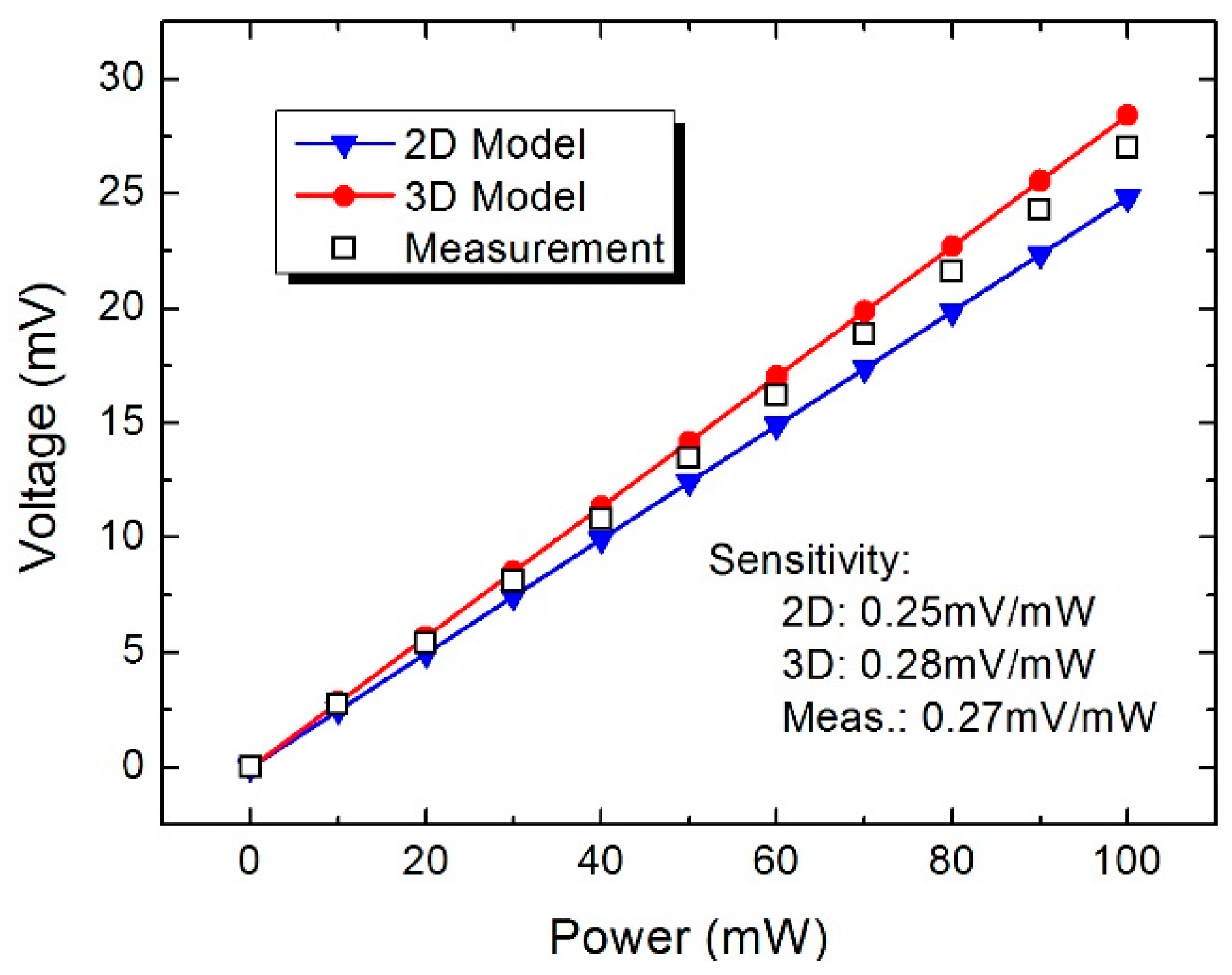

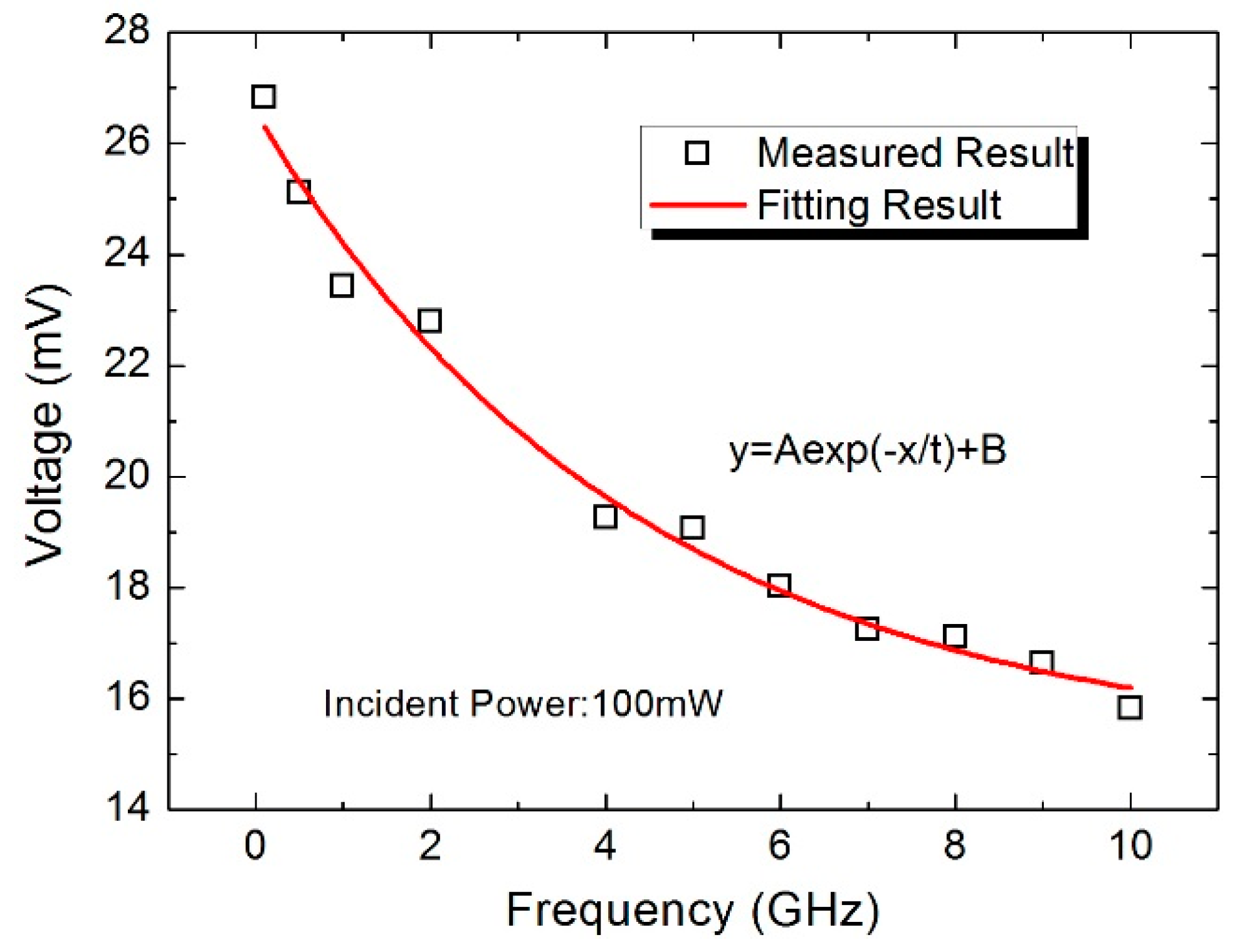
| Symbol | Quantity | Value |
|---|---|---|
| g | width of the CPW gap | 58 μm |
| s | width of signal line | 100 μm |
| w | width of CPW ground | 300 μm |
| d | distance between the resistors and hot junctions in the x direction | 10 μm |
| l | length of the thermocouples | 200 μm |
| λ | thermal conductivity (GaAs) | 46 W/(m·k) |
| a1 | Seebeck coefficients (Au) | 1.7 μV/K |
| a2 | Seebeck coefficients (GaAs) | 100 μV/K |
| T0 | ambient temperature | 300 K |
| a | coefficient 1 | 1.4 × 1016 |
| b | coefficient 2 | 1.97 × 107 |
© 2016 by the authors; licensee MDPI, Basel, Switzerland. This article is an open access article distributed under the terms and conditions of the Creative Commons Attribution (CC-BY) license (http://creativecommons.org/licenses/by/4.0/).
Share and Cite
Yi, Z.; Liao, X. A 3D Model of the Thermoelectric Microwave Power Sensor by MEMS Technology. Sensors 2016, 16, 921. https://doi.org/10.3390/s16060921
Yi Z, Liao X. A 3D Model of the Thermoelectric Microwave Power Sensor by MEMS Technology. Sensors. 2016; 16(6):921. https://doi.org/10.3390/s16060921
Chicago/Turabian StyleYi, Zhenxiang, and Xiaoping Liao. 2016. "A 3D Model of the Thermoelectric Microwave Power Sensor by MEMS Technology" Sensors 16, no. 6: 921. https://doi.org/10.3390/s16060921





